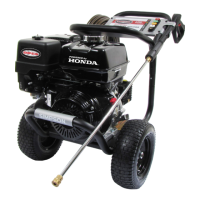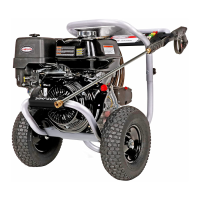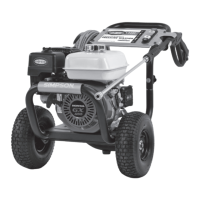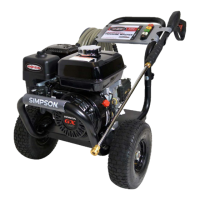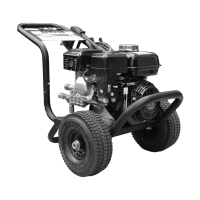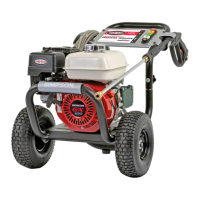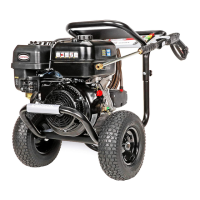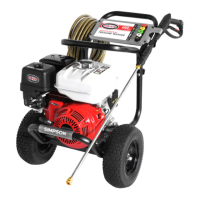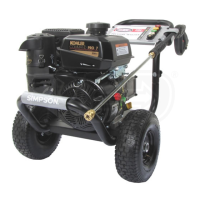INSTRUCTION
MANUAL
MANUAL DE
INSTRUCCIONES
Part No. 7105325 Rev. 3 FEB2016
If your pressure washer is not working properly or if there are parts missing or broken,
please DO NOT RETURN IT TO THE PLACE OF PURCHASE. Contact our customer
service department at
1-877-362-4271 or www.simpsoncleaning.com
Si su lavadora a presión no trabaja correctamente ó encuentra partes rotas
ófaltantes, por favor NO LA REGRECE AL LUGAR DONDE LA COMPRO.
Contáctese con nuestro Departamento de Servicio al Cliente llamando al
1-877-362-4271 o www.simpsoncleaning.com
SAVE THIS MANUAL FOR FUTURE REFERENCE
4200 PSI
4.0 GPM
IMPORTANT: Please make certain that the person who is to use this equipment carefully
reads and understands these instructions before operating.
IMPORTANTE: Aségurese por favor de que la persona que vaya a utilizar este equipo lea
con cuidado y comprenda estas instrucciones antes de operar.
VEA EL ESPAÑOL EN LA CONTRAPORTADA. INSTRUCTIVO DE OPERACIÓN,
CENTROS DE SERVICIO Y PÓLIZA DE GARANTÍA. ADVERTENCIA:
LÉASE ESTE INSTRUCTIVO ANTES DE USAR EL PRODUCTO.
PROFESSIONAL PRESSURE WASHER
MODEL
MODELO
PS4240H
